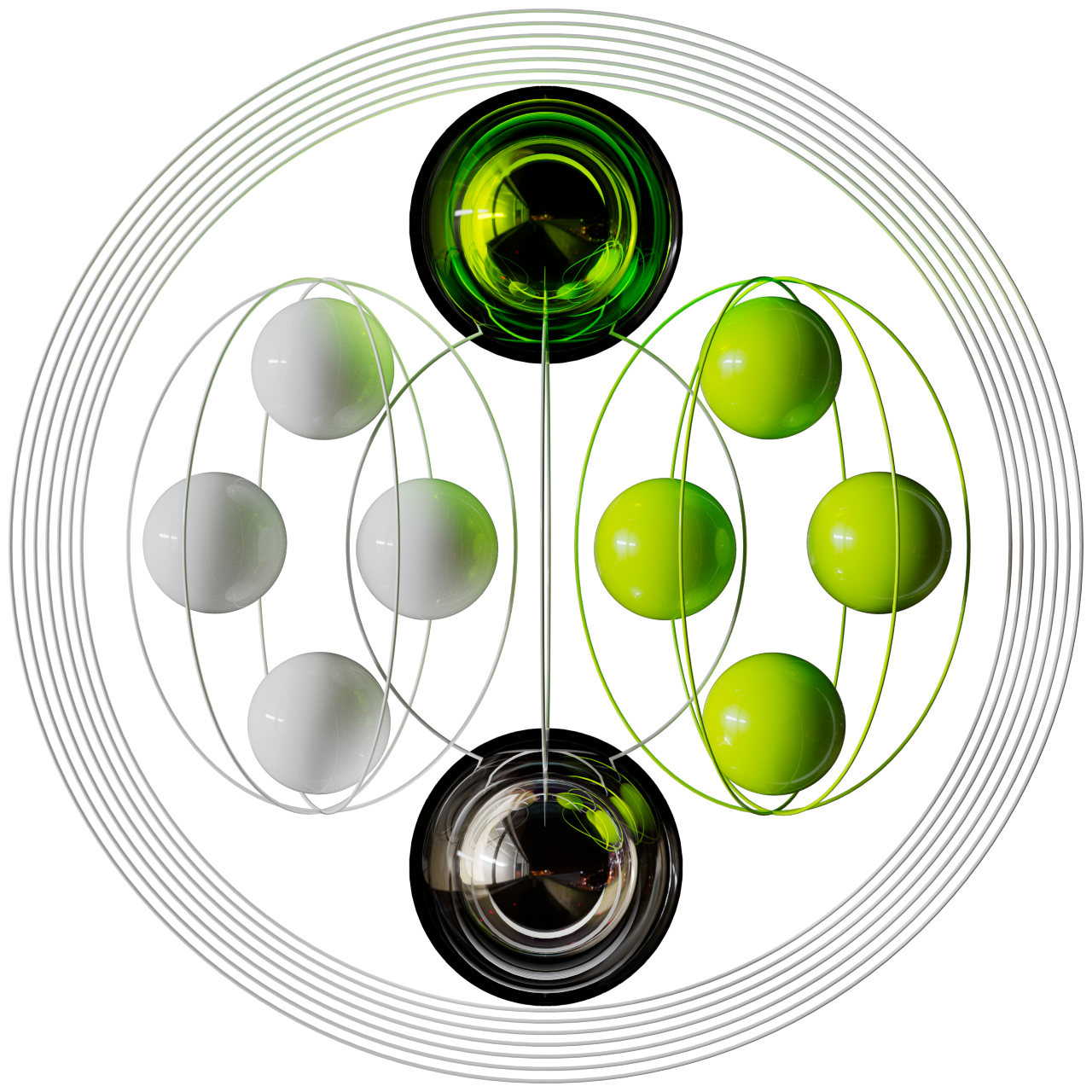A generic definition of cosmogony would say it refers to the scientific or mythological study of the origin and development of the universe or cosmos. It involves exploring scientific theories, beliefs, or narratives about how the universe came into existence, how it is structured, and how it has evolved over time.
/kɒzˈmɒɡəni/, or on cosmogony
Cosmogony. Cosmogonies. As an artist, they have been a catalyst of my creations. Cosmogony stimulates the question of what the present, the future, the past is. At what moment are we really living?
We can be so embedded in a culture that we take things for granted — without questioning the signs, symbols, rituals, institutions. And so, by looking at different cosmogonies or simply trying to reimagine one triggers meaningful questions as to what we see, how we see things, what is invisible to the human eye, and so forth.
Why cosmogony and not cosmology?
Indeed, cosmogony. Not the study of stars and constellations per se, but rather the explanations of how the universe, the world, and the beings came to exist.
For the space agency NASA, cosmology is the study of the structure and changes in the present universe, while the scientific field of cosmogony is concerned with the origin of the universe. For me, Cosmogony is a concept in itself and a bridge to the different narratives.
On the one hand, the Big Bang remains the dominant narrative in physics, astronomy and across the so-called hard sciences, although philosophical debates about it persist. On the other hand, we find various cosmogonic narratives in different regions, at different times related to the creation myth; with deities, gods, mythical beings as sources of knowledge to which humans turned to explain the origins of the universe, to find answers to our deepest questions.
The new dimensions technology brings to cosmogonies, and how digital art is helping us question the universe
The advent of machines, computers and the digital space added new dimensions to the understanding of the cosmos. New technologies allowed the exploration of the universe both objectively and subjectively: a human on the moon; a robot on Mars; a scan of the brain; the transcription and transmission of ethnographies; community radios held by indigenous peoples; the syncretism of stories and identities.
Along with these, the digital space has offered us must-seize opportunities to question the universe — in our case, through digital art. It offers us the possibility to co-create — with computers, fellow participants, members of our community — a cosmogony for what lies on the other side of the canvas/screen, reflecting or rejecting the existing narratives we find today.
My artistic approach explores cosmogonic narratives as we critically dive into art and technology.
Through the generative artworks in the series URUCU, for instance, I pay tribute to cosmogonies existing on the same territory, somewhat connected by a generation that saw the struggles of traditional peoples in Brazil in reclaiming their identity and rights while Japanese culture became popular through games and TV shows in the country that hosts the biggest Japanese community outside Japan. URUCU offers a platform to think about the underlying values in each of the cosmogonies, and to reflect on the worldviews rooted in the foundational myth of Brazilian identity.
My artworks are a portal to the MGXS Universe and Cosmogony. There, we find an interactive experience where one can find thoughts, data, stories, history, artworks, content from diverse topics: from human insecurities to the Big Bang. Each piece is a platform for exploration of technology and humanity, of the relation humans-machines through art prompted by reflective questions.
So, why attempt to reimagine cosmogonies?
The MGXS Cosmogony is the backbone of an environment where technology becomes a medium to explore subjectivity, abstraction, and the senses. It powers an evolving entity created by AI, machine learning, and generative computing that responds to user inputs. This dynamic interaction blurs the line between the creator and the machine, facilitating a collaborative artistic journey.
The MGXS Cosmogony also reflects the search to explore the elements that are part of the universe, objectively and subjectively. And so, it is the thread that weaves my creations, which become part of a living database where each fragment of art, symbol, sound, or visual structure is part of a complex network of interconnected meanings.
On the one hand, MGXS's Human Cosmogony revolves around an intellectual and artistic journey through origins and nature of human existence, while simultaneously reimagining the dynamics between humans and machines — leading to the creation of a new way of explaining our own cosmogony, or simply reinventing one.
On the other hand, MGXS's Machine Cosmogony looks into the canvas, travelling through dimensions, and reimagines the nature of creations and the very creatures on the other side. Artificial beings may reflect our nature, our human condition and our struggle for identity — all this while being part of and living in their very own cosmogony.
Cosmogony can only be experienced by entering it.
The MGXS Cosmogony merges physical and digital, exploring the relationship between human and synthetic, real and imagined, chaos and structure. The various digital techniques used in my creative processes converge to create an immersive experience. My conceptual basis lies in the idea of a generative universe that transforms according to user inputs and the internal dynamics of its systems.
The result is the different experimental projects and series of artworks produced; the immersion of participants in a non-chronological but experiential journey; a new form of artistic expression that goes beyond what traditional art has achieved.
How art conveys meaning through cosmogonic themes
I believe art has been influenced by cosmogonies throughout history, and has helped us understand different cosmogonies as well. Ancient societies created artistic representations of their cosmogonic creation in the form of detailed mythologies, mixing religious and cosmological aspects.
Renaissance artists like Italians Michelangelo and Botticelli used classical themes relating to cosmogony in their works as a way of exploring humanism and the divine spirit. Modern artists like Salvador Dalí and Jackson Pollock have also depicted chaos in cosmos or creation, reflecting contemporary scientific and philosophical understandings of the universe. Contemporary artist Björk's "Cosmogony" delves into themes of creation and the birth of the universe blending scientific and mythological perspectives; the natural world and the mysteries of creation; the origins of the cosmos and the human understanding of existence.
Today, Cosmogony is how I write the MGXS episodes in the new chapters of art history.
And you, what does Cosmogony mean to you?
Share this article with your thoughts in a tweet and tag @mgxs_co on X.
Send your comments to hi@mgxs.co
“The world began without the human race and will end without it.”


